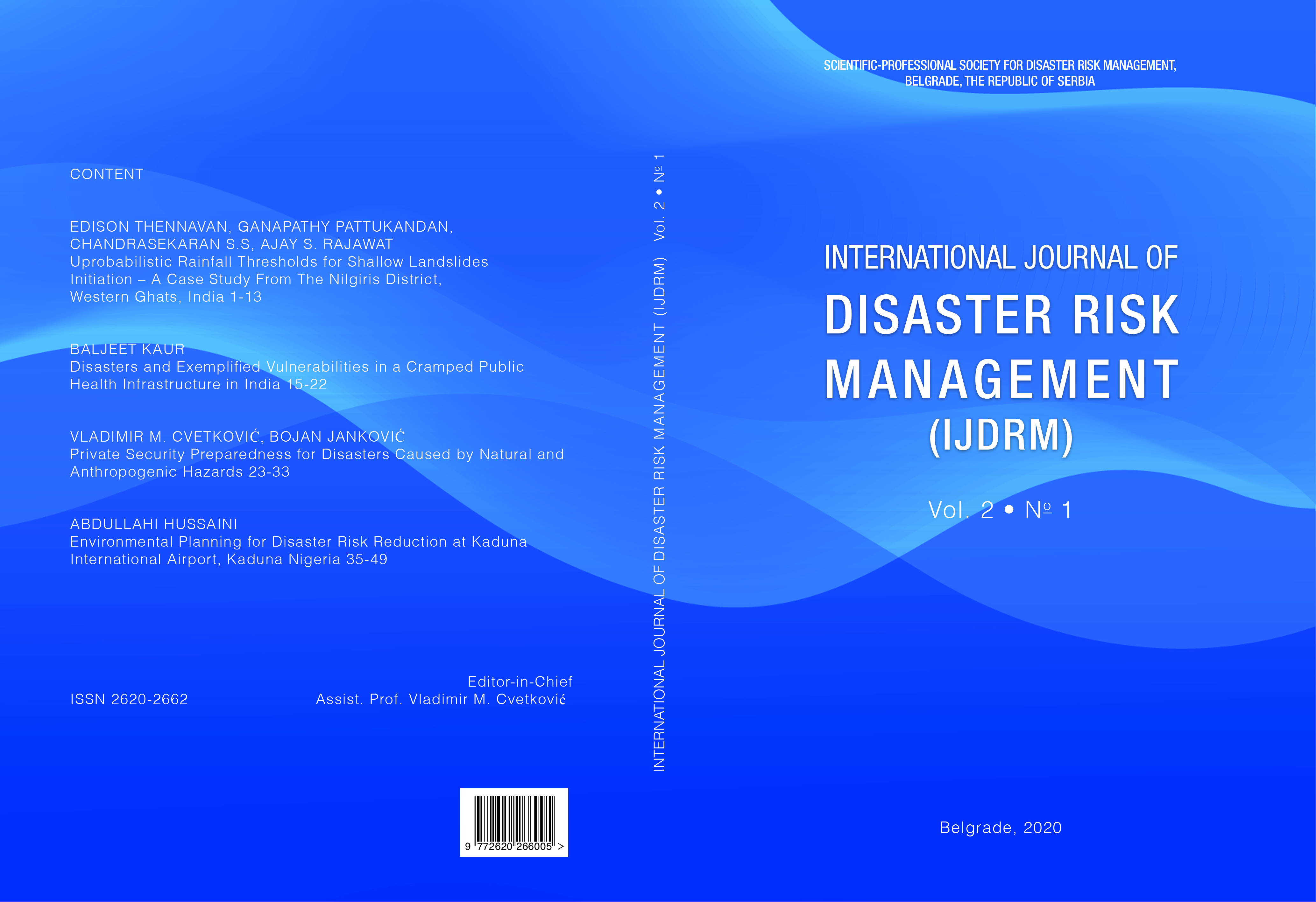Disasters and exemplified vulnerabilities in a cramped Public Health Infrastructure in India
Disasters and exemplified vulnerabilities in a cramped Public Health Infrastructure in India
Author(s): Baljeet KaurSubject(s): Social Sciences, Geography, Regional studies
Published by: Naučno-stručno društvo za upravljanje rizicima u vanrednim situacijama
Keywords: Disasters; vulnerabilities; public health infrastructure; India
Summary/Abstract: The varied connotations to the term ‘Development’ are been channeled through perception. The perception of a political stakeholder differs from that of a rich-businessman, and again, from those who are lesser endowed. There is a pressing need for the government, to identify and maintain checks and balances between exploitative and responsive governance. The extension of the healthcare sector is an integral part of this holistic growth, while the customer base has largely financed the industry; the obligation on the hand of government needs to increase. The out of pocket spending by patients covers the finances of the sector by 64.2%. (NSSO, 2014 report). The lesser amount of government spending in the healthcare system is a drawback and has effects on the Industry in a negative frame in a large manner, only 28.6% of Total Health Expenditure is financed by Govt. of India and therefore, calls for the need for better financing mechanisms in the country in the form of insurance schemes and a smoother flow of the already existing policies and frameworks. In the debate of private v/s public hospitals, the paper presents reasons that create a barrier on effective utilization of benefits provided, and further constructs the viewpoint that though expensive, private healthcare services provide more assurance to the population in general. The over-crowding of these public institutions in times of epidemics or otherwise, is a self-indication of the dearth of infrastructure and the kind of impacts the interventions has had in terms of alleviating such grievances. The several debates that I have tried to analyze and interpret include those of the intersections the individuals of the country and the lawmakers have crossed in terms of developmental projects and whether these promises hold true in terms of concrete reality. The depth of understanding and entering these discussions is only a gateway to more pertinent questions of whether the present infrastructure has dwindled due to disasters in the past? Are we actually moving to building resiliency or is it just a mock-up present on paper only? The paper reflects qualitatively on several government reports on health and the state of the hospitals presented within various contexts of Disasters in the past. The analysis of the National Rural Health Mission, National Urban Health Mission and various others programs initiated by the Government of India and the scope that it has to remove the present day struggled faced by an over-crowded and pressurized public sector healthcare structure.
Journal: International Journal of Disaster Risk Management
- Issue Year: 2/2020
- Issue No: 1
- Page Range: 15-22
- Page Count: 7
- Language: English

